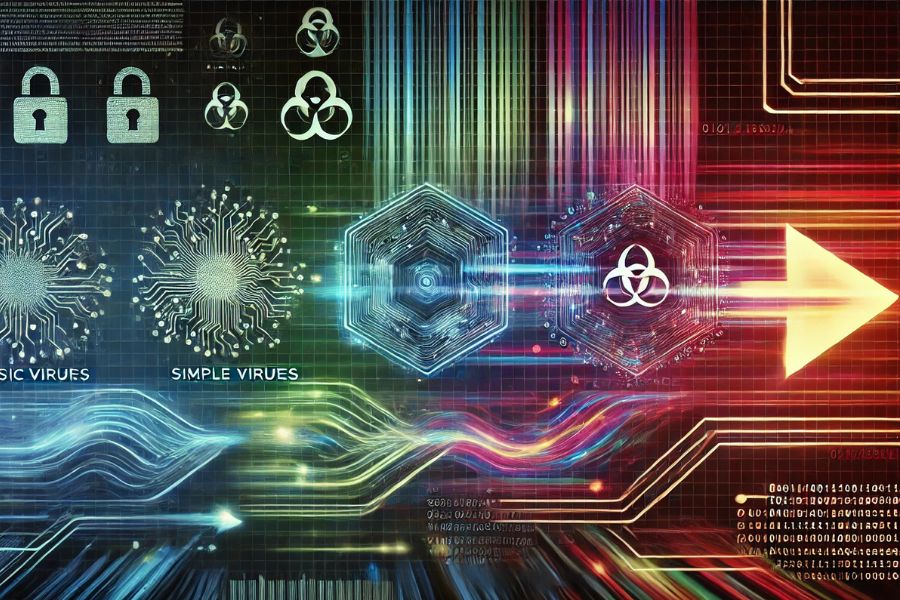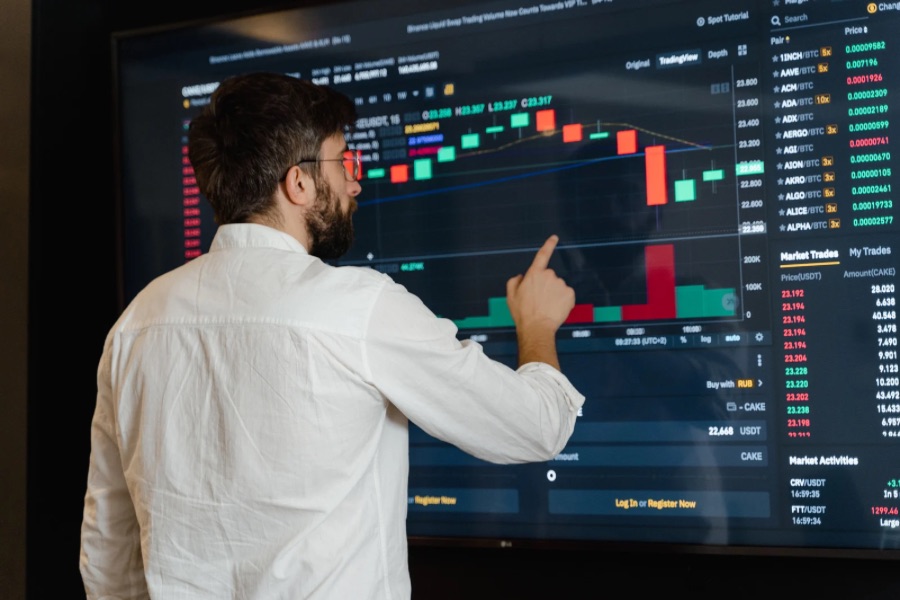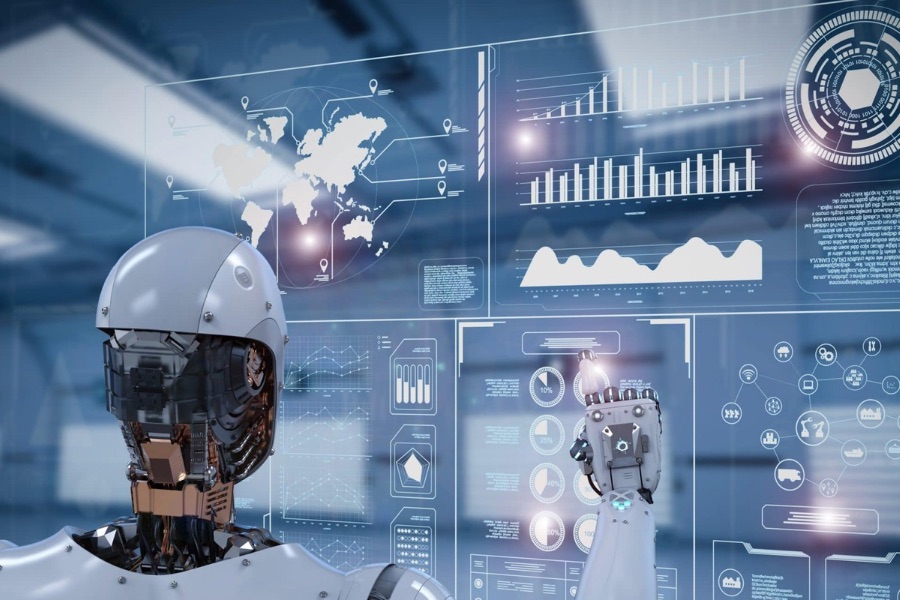The Evolution of Cyber Threats: From Viruses to AI Attacks
November 13, 2024, 16 min read
The digital landscape has transformed significantly over the past few decades. What began as isolated incidents of viruses has now evolved into sophisticated attacks, leveraging cutting-edge technologies like artificial intelligence (AI). This article explores the progression of cyber threats, examining their origins, key milestones, and current cyber security trends driven by AI and machine learning.
The landscape of cyber threats has dramatically transformed since the early days of computing. From simple viruses that caused minor annoyances to sophisticated AI-driven attacks capable of crippling entire networks, the evolution of cyber threats mirrors the rapid advancement of technology itself. As our digital world grows more complex, so do the dangers lurking within it. Understanding this evolution is crucial for anyone who uses the internet, from casual browsers to business owners and cybersecurity professionals. The progression of cyber threats has been relentless, with each technological leap providing new opportunities for malicious actors to exploit vulnerabilities. What began as relatively harmless pranks or experiments has evolved into a global cybercrime, espionage, and warfare industry. This transformation has been driven by various factors, including the increasing value of digital assets, the interconnectedness of systems, and the development of more sophisticated tools and techniques. As we continue integrating technology into every aspect of our lives, the potential impact of cyber threats grows exponentially, making it imperative for individuals and organizations to stay informed and vigilant in the face of this ever-changing digital landscape.
What Are Cyber Threats?
Cyber threats are malicious attempts to damage, disrupt, or gain unauthorized access to computer systems, networks, or devices. These threats come in various forms, each designed to exploit vulnerabilities in our digital infrastructure. Common examples include viruses and self-replicating programs that can spread from one computer to another, often causing damage to files or system performance. Phishing attacks trick users into revealing sensitive information by posing as legitimate entities. Ransomware, a more recent and particularly insidious threat, encrypts a victim’s files and demands payment for their release.
Advanced Persistent Threats (APTs) remain undetected for an average of 286 days, highlighting the challenge of identifying sophisticated cyber intrusions.” — Mandiant
The motivations behind cyber threats are as diverse as their methods. Some attackers seek financial gain, while political or ideological goals drive others. Regardless of the intent, the impact of these threats can be devastating, ranging from personal data theft to large-scale disruptions of critical infrastructure.
Cyber threats continuously evolve, adapting to new technologies and exploiting emerging vulnerabilities. They can target individuals, businesses, or entire nations, making them a global concern. Some threats are designed to steal sensitive information, such as personal identities, financial data, or trade secrets. Others aim to disrupt operations, causing financial losses and reputational damage. Cyber threats extend beyond traditional computer systems, encompassing mobile devices, Internet of Things (IoT) gadgets, and even industrial control systems.
“The global cybersecurity market is projected to grow from $240 billion in 2022 to $370 billion by 2029, reflecting the urgent need for robust security measures.” — Fortune Business Insights
The complexity of cyber threats often makes them difficult to detect and mitigate. They can lurk unnoticed in systems for extended periods, gathering information or waiting for the right moment to strike. Advanced Persistent Threats (APTs) are a prime example of this, where attackers maintain long-term access to a network, often for espionage purposes. Moreover, the anonymous nature of the internet allows threat actors to operate from anywhere in the world, complicating efforts to attribute attacks and bring perpetrators to justice.
Understanding cyber threats is crucial in today’s digital age, as they pose risks to individuals, businesses, and national security alike. The dynamic nature of these threats necessitates constant vigilance and adaptation of security measures to protect against ever-evolving attack vectors and techniques.
The Birth of Cyber Threats: Early Viruses and Worms
The earliest cyber threats emerged in the form of computer viruses and worms. The first known virus, Creeper, appeared in the early 1970s, infecting ARPANET, the precursor to the modern Internet. Soon after, Elk Cloner, in 1982, became the first widespread virus, targeting Apple II systems via infected floppy disks.
Key Characteristics of Early Threats:
- Manual Spread: Early viruses relied heavily on physical media for propagation.
- Annoyance, Not Profit: Their primary goal was often to display messages or disrupt operations rather than cause financial damage.
The history of cyber threats can be traced back to the late 1980s, when the first computer viruses began to emerge. One of the earliest and most notable examples was the Morris Worm, released in 1988. Created by Robert Tappan Morris, a graduate student at Cornell University, this worm was not intended to cause damage but to gauge the size of the internet. However, due to a programming error, it replicated much faster than anticipated, slowing down computers to unusability and effectively shutting down much of the internet.
The Rise of Malware: From Annoyance to Destruction
In the 1990s and early 2000s, cyber threats evolved in both complexity and intent. Malware became a tool for malicious actors to gain unauthorized access, steal sensitive information, or damage systems.
Notable Examples:
- ILOVEYOU (2000): A simple email-based virus that caused over $10 billion in damages globally.
- SQL Slammer (2003): A worm that exploited vulnerabilities in SQL servers, crippling the internet for hours.
Shift in Motivation:
- Financial Gain: Cybercriminals began using malware to steal credit card information and conduct identity theft.
- Corporate Espionage: Governments and organizations started using cyber tools for espionage and sabotage.
Following the Morris Worm, viruses swept through the digital landscape. These early threats were relatively simple in design and limited in their capabilities. They typically spread through floppy disks and email attachments, causing disruptions such as displaying messages on screens, deleting files, or slowing down system performance. Notable examples include the Michelangelo virus, which activated on March 6th (Michelangelo’s birthday) and could potentially wipe a computer’s hard drive, and the ILOVEYOU virus, which spread rapidly via email in 2000, causing billions of dollars in damage worldwide.
The only secure computer is one that’s unplugged, locked in a safe, and buried 20 feet under the ground in a secret location… and I’m not even too sure about that one.”
— Dennis Hughes, FBI
The early 1990s saw the rise of more sophisticated viruses, such as the Concept virus, which was the first to target Microsoft Word documents. This marked a significant shift as viruses began to exploit popular software applications. Another milestone was the emergence of polymorphic viruses, which could change their code to avoid detection by antivirus software. The Tequila and Maltese Amoeba viruses were among the first to employ this technique, making them particularly challenging to combat.
As the internet became more widespread, new types of malware emerged. Boot sector viruses, which infected the master boot record of hard drives, were particularly prevalent during this period. Examples include the Form and Monkey viruses, which could render computers unbootable. The late 1990s also saw the rise of macro viruses, which exploited the macro programming capabilities in applications like Microsoft Office. The Melissa virus, which combined macro functionality with email propagation, marked a turning point in the speed at which malware could spread globally.
“There are only two types of companies: those that have been hacked and those that will be.”
— Robert Mueller, Former FBI Director
The era of early cyber threats laid the foundation for future developments in both malware and cybersecurity. It prompted the creation of the antivirus industry and raised awareness about the importance of digital security. While less sophisticated than modern threats, these early viruses and worms demonstrated the potential for widespread disruption in an increasingly connected world, setting the stage for the more complex cyber landscape we navigate today.
How Malware Became Big Business
Cybercriminals recognized the potential for financial gain as the internet grew and became an integral part of daily life and commerce. This shift marked the transition from viruses created for notoriety or as technical challenges to malware designed explicitly for profit. Ransomware emerged as a particularly lucrative attack, encrypting victims’ files and demanding payment for their release.
The commercialization of malware led to the development of sophisticated, profit-driven cyber threats. Cybercriminals began operating like businesses, with organized structures, specialized roles, and even customer service departments. This professionalization of cybercrime resulted in more targeted and effective attacks, as criminals invested time and resources into developing advanced malware strains and distribution methods.
“The Internet is the first thing that humanity has built that humanity doesn’t understand, the largest experiment in anarchy that we have ever had.”
— Eric Schmidt, Former CEO of Google
One of the most infamous ransomware attacks was WannaCry in 2017. This global cyberattack affected over 200,000 computers across 150 countries, causing estimated damages of billions of dollars. The attack exploited a vulnerability in older Windows operating systems and spread rapidly through networks. Another notable example was the Petya ransomware, which first appeared in 2016 and resurfaced in 2017 with an improved version called NotPetya. This attack primarily targeted Ukrainian businesses but quickly spread globally, causing widespread disruption.
The rise of cryptocurrency further fueled the ransomware industry by providing attackers with a method to receive payments that were difficult to trace. This period also saw the emergence of professional hacking groups, some of which operated like businesses with customer support for victims and even money-back guarantees if decryption failed.
To win 100 victories in 100 battles is not the acme of skill. To subdue the enemy without fighting is the acme of skill.”
— Sun Tzu, often referenced in cybersecurity for strategy against unseen threats
The malware-as-a-service model also gained traction during this period. Cybercriminals began offering ready-made malware kits and infrastructure for rent, lowering the barrier to entry for aspiring attackers. This democratization of cybercrime tools led to a surge in the number and variety of attacks, as individuals with limited technical skills could now launch sophisticated campaigns.
The financial motivation behind these attacks drove innovation in malware development. Cybercriminals continually refined their techniques to evade detection and maximize profits. This included the creation of polymorphic malware that could change its code to avoid antivirus detection and fileless malware that operated entirely in a computer’s memory, leaving no trace on the hard drive.
Malware’s impact on businesses extends beyond direct financial losses. It has led to increased cybersecurity spending by organizations, disrupted critical infrastructure, and eroded trust in digital systems. The profitability of cybercrime has also attracted organized crime groups and even nation-states, further blurring the lines between criminal activity and cyber warfare.
Nation-State Cyber Attacks: A New Era of Threats
As cyber threats evolved, governments began to recognize the potential of digital warfare. Nation-state cyber-attacks represent a significant escalation in both the sophistication and potential impact of cyber threats. These attacks are typically carried out by state-sponsored hacking groups with substantial resources and expertise.
The motivations behind nation-state cyber attacks are diverse and often align with geopolitical objectives. They can range from intelligence gathering and espionage to sabotage of critical infrastructure and economic disruption. These attacks are characterized by their persistence, complexity, and ability to remain undetected for extended periods.
One of the most famous examples of a nation-state cyber attack is Stuxnet, which was discovered in 2010. This highly sophisticated worm was designed to target industrial control systems, specifically those used in Iran’s nuclear program. Stuxnet demonstrated the potential for cyber attacks to cause physical damage to critical infrastructure, marking a new era in cyber warfare. It was a wake-up call for governments and industries worldwide, highlighting the vulnerability of even isolated systems.
More recently, the SolarWinds attack in 2020 highlighted the far-reaching consequences of nation-state cyber espionage. This attack involved inserting malicious code into software updates for SolarWinds’ Orion platform, which government agencies and large corporations widely use. The breach went undetected for months, allowing the attackers to access sensitive information from numerous high-profile targets, including U.S. government departments.
The SolarWinds incident underscored the potential for supply chain attacks, where adversaries compromise trusted software providers to gain access to their customers’ systems. This attack is particularly insidious as it exploits the trust relationship between organizations and their technology vendors.
“Cybercrime is the greatest threat to every company in the world.”
— Ginni Rometty, Former CEO of IBM
Other notable nation-state cyber attacks include the 2014 hack of Sony Pictures, attributed to North Korea, and the 2015 breach of the U.S. Office of Personnel Management, believed to be carried out by China. These incidents demonstrate the wide-ranging nature of nation-state cyber activities, from retaliatory actions to large-scale data theft.
The rise of nation-state cyber attacks has led to increased diplomatic tensions and calls for international norms governing behavior in cyberspace. Some countries have begun to develop offensive cyber capabilities as a form of deterrence, while others are investing heavily in defensive measures to protect critical infrastructure and sensitive data.
As nation-state cyber attacks evolve, they pose significant challenges for cybersecurity professionals and policymakers alike. The asymmetric nature of these threats, where a small group of skilled hackers can potentially cripple the infrastructure of an entire nation, has forced a reevaluation of traditional security paradigms. Addressing these threats requires a combination of technological innovation, international cooperation, and strategic policy-making to mitigate risks and enhance resilience in an increasingly interconnected world.
AI-Powered Cyber Attacks: The Present and Future
Characteristics of AI-Driven Threats:
- Automation: AI can automate reconnaissance, identify vulnerabilities, and execute attacks without human intervention.
- Advanced Phishing: AI tools generate highly personalized phishing messages, increasing the likelihood of successful attacks.
- Deepfake Technology: AI can create convincing fake videos or audio to deceive individuals or organizations.
Examples of Emerging AI Threats:
- Adversarial AI: Attacks that trick AI systems, such as misleading facial recognition or self-driving car systems.
- Autonomous Malware: Malware capable of modifying its code to evade detection systems.
Integrating artificial intelligence (AI) and machine learning (ML) into cyber attacks represents the cutting edge of cyber threats. AI-driven cyber attacks can adapt and evolve in real time, making them significantly more challenging to detect and mitigate. One emerging threat is deepfake phishing, where AI creates convincing audio or video impersonations to manipulate victims into revealing sensitive information or transferring funds. These sophisticated impersonations can be so realistic that even trained professionals may struggle to distinguish them from genuine communications.
Machine learning algorithms are also employed to automate and enhance various aspects of cyber attacks. For instance, ML can analyze vast amounts of data to identify vulnerabilities in target systems more efficiently than human hackers. This capability allows attackers to discover and exploit weaknesses in networks and applications at an unprecedented speed and scale. AI can also help craft more convincing phishing emails by learning from successful attacks and adapting the language and tactics. These AI-generated phishing attempts can personalize content based on the victim’s digital footprint, making them far more likely to succeed than traditional, generic phishing emails.
Looking to the future, experts predict that AI will play an increasingly significant role in cyber attacks. Potential scenarios include AI systems that can autonomously discover and exploit vulnerabilities or swarm attacks where multiple AI-driven bots coordinate to overwhelm defenses. The speed and scale at which AI can operate pose significant challenges for traditional cybersecurity measures. For example, AI-powered malware could mutate its code in real time to evade detection by antivirus software, making it extremely difficult to create effective signatures or patterns for identification.
Another concerning development is the potential for AI to be used in social engineering attacks. By analyzing vast amounts of online personal data, AI systems could create highly targeted and personalized scams that exploit individual vulnerabilities and preferences. This level of customization could significantly increase the success rate of such attacks, as victims may find it harder to distinguish between legitimate communications and AI-crafted deceptions.
The use of AI in cyber attacks also raises concerns about the potential for “set-and-forget” attacks, where an AI system is deployed and left to carry out long-term, persistent campaigns without direct human intervention. These autonomous attack systems could continuously probe for weaknesses, adapt to defensive measures, and exploit opportunities as they arise, all while minimizing the risk of detection or attribution to their creators.
As AI technology continues to advance, we can expect to see increasingly sophisticated and creative applications in cyber attacks. This evolution will likely include AI systems that can understand and exploit complex software ecosystems, predict human behavior to optimize attack strategies, and even anticipate and counter defensive measures before they are implemented. The arms race between AI-powered attacks and AI-enhanced defenses is set to become a defining feature of the cybersecurity landscape in the coming years.
How to Protect Yourself from Evolving Cyber Threats
While the landscape of cyber threats continues to evolve, several practical steps individuals and organizations can take to enhance their security exist. These measures form a multi-layered approach to cybersecurity that can significantly reduce the risk of falling victim to cyberattacks.
- Use strong, unique passwords for each account and enable two-factor authentication (2FA) wherever possible.
- Keep all software and operating systems up to date to patch known vulnerabilities.
- Install and regularly update reputable antivirus and anti-malware software.
- Use a Virtual Private Network (VPN) when connecting to public Wi-Fi networks.
- Be cautious about sharing personal information online and be wary of unsolicited emails or messages.
- Regularly back up important data to a secure, offline location.
- Educate yourself and others about common cyber threats and how to recognize them.
Implementing these measures requires ongoing vigilance and commitment. Consider using a password manager to generate and store complex, unique passwords for each account. Regarding software updates, enable automatic updates whenever possible to ensure you’re always protected against the latest known vulnerabilities. Choose reputable software for antivirus and anti-malware protection and ensure it’s set to perform regular system scans and real-time protection.
A VPN is particularly important when accessing sensitive information on public networks, as it encrypts your data and masks your IP address. Be mindful of the information you share online, especially on social media platforms, as cybercriminals can use it for social engineering attacks. Regular backups are crucial in case of ransomware attacks or data loss and should be stored in a secure, offline location or encrypted cloud storage.
Perhaps most importantly, staying informed about the latest cyber threats and attack methods is essential. This knowledge helps you recognize potential threats and respond appropriately. Consider participating in cybersecurity awareness training programs or following reputable cybersecurity news sources to stay up-to-date with the evolving threat landscape.
The Role of Cybersecurity in Mitigating AI Threats
Organizations should employ AI-driven cybersecurity tools for real-time threat detection and response.
Key Defensive Measures:
- Behavioral Analytics: Using AI to identify unusual activity in networks.
- Threat Intelligence Platforms: Collecting and analyzing data on emerging threats.
- Zero Trust Architecture: Assuming no user or device is trustworthy by default, enforcing strict access controls.
The integration of AI into cyberattacks has brought new challenges. Unlike traditional threats, AI-driven attacks can adapt and learn, making them more challenging to detect and prevent.
As cyber threats become more sophisticated, the cybersecurity industry is evolving to meet these new challenges. Proactive cybersecurity measures are increasingly necessary in the face of AI-driven threats. This includes implementing robust security protocols, conducting regular security audits, and employing threat intelligence to stay ahead of potential attacks. Organizations are now investing heavily in advanced security operations centers (SOCs) that utilize cutting-edge technologies to monitor networks 24/7 for any signs of AI-driven intrusions.
Emerging tools and strategies are being developed to combat AI-powered threats. For example, AI and machine learning are being used to enhance threat detection systems, enabling them to identify and respond to unusual patterns or behaviors that might indicate an attack. Behavioral analytics and anomaly detection systems can help spot AI-driven attacks that might otherwise slip past traditional security measures. These systems analyze vast amounts of data in real-time, learning from each interaction to improve their accuracy and response times.
Additionally, the concept of “AI vs. AI” is gaining traction, where defensive AI systems are deployed to counteract malicious AI. These systems can adapt and learn from new threats, potentially providing a more dynamic and responsive defense against evolving cyber attacks. Defensive AI can simulate potential attack scenarios, predict future threats, and automatically deploy countermeasures, often faster than human analysts could respond.
The integration of AI in cybersecurity also extends to automated patch management and vulnerability assessment. AI-powered systems can continuously scan networks for weaknesses, prioritize risks, and even apply patches autonomously, significantly reducing the window of opportunity for attackers. Furthermore, AI is enhancing the capabilities of encryption technologies, developing more complex algorithms that are increasingly difficult for malicious AI to crack.
As the role of AI in cybersecurity expands, there’s also a growing focus on ethical considerations and transparency. Organizations are developing frameworks to ensure that AI-driven security measures are used responsibly and in compliance with data protection regulations. This includes implementing explainable AI models that can provide clear reasoning for their decisions, crucial for maintaining trust and accountability in AI-powered cybersecurity systems.
Future Outlook on Cybersecurity and Threats
Emerging technologies such as quantum computing are likely to shape the future of cyber threats and cybersecurity. While quantum computers have the potential to break many current encryption methods, they also offer new possibilities for creating more secure communication systems. This dual nature of quantum computing underscores the ongoing arms race between cyber attackers and defenders. As quantum technology advances, we may see a complete overhaul of current cryptographic standards, leading to the development of quantum-resistant algorithms to protect sensitive data.
The Internet of Things (IoT) is another area that will significantly impact the future of cybersecurity. As more devices become interconnected, the attack surface for cybercriminals expands exponentially. Smart homes, autonomous vehicles, and industrial control systems require robust security measures to prevent potentially catastrophic breaches. This proliferation of connected devices will necessitate new approaches to network security, including AI-driven anomaly detection and edge computing solutions to process data closer to its source.
As technology continues to advance, the importance of cybersecurity education and adaptability cannot be overstated. Individuals and organizations must stay informed about the latest threats and continuously update their security practices. This includes not only technical measures but also fostering a culture of security awareness. Cybersecurity training will need to evolve beyond simple password policies and phishing awareness, encompassing a broader understanding of emerging threats and the role of each individual in maintaining digital security.
The rise of 5G networks and eventually 6G will bring about new challenges and opportunities in cybersecurity. These high-speed, low-latency networks will enable new applications and services, but they will also require new security paradigms to protect against sophisticated, high-speed attacks. Network slicing and software-defined networking will become crucial components of future cybersecurity strategies, allowing for more granular control and isolation of network resources.
Our digital world’s interconnected nature means cybersecurity is a shared responsibility. Collaboration between governments, private sector companies, and individuals will be crucial in developing comprehensive strategies to address future cyber threats. This collaboration may include international cybersecurity treaties, public-private partnerships for threat intelligence sharing, and open-source security initiatives. As we move forward, anticipating and quickly responding to new types of attacks will be vital to maintaining a secure digital environment.
Biometric security measures are likely to play a more significant role in the future of cybersecurity. Advanced facial recognition, fingerprint scanning, and DNA-based authentication methods may become commonplace. However, these technologies also raise important questions about privacy and data protection, requiring careful consideration of ethical implications and potential vulnerabilities. The balance between security and privacy will continue to be a central debate in future cybersecurity policies and technologies.




























